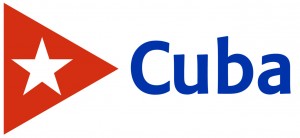Kim Andrew Elliott, an audience research analyst in the U.S. International Broadcasting Bureau and former producer/host of VOA’s Communications World (1995-2002), recently offered his thoughts about US international broadcasting to Cuba:
Cuba needs some source of independent, outside news.
It is impossible to get an adequate estimate of audience size in Cuba, but two percent is fairly typical in international broadcasting. The quality (i.e., opinion leading ability) of the audience might make up for the lack of quantity.
“Martí” would be a predictable name for an anti-Castro clandestine station, but it was a poor choice of name for a station that has any intent to establish its credibility.
The move to combine the efforts of Radio/TV Martí and VOA Spanish should continue.
It’s unclear whether CNN’s audience in Cuba is watching its satellite channel, or seeing CNN reports on Cuban television. If CNN en Español is successful in attracting audiences in Cuba, then USIB should not compete with it.
US international broadcasting to Cuba should combine radio, internet (keeping in mind that internet access in Cuba, even via mobile phones, is still very limited), and not more than an hour a day of programs on a television channel that is viewed in Cuba via satellite. A 24-hour television channel was a bridge too far. If elements of the Cuban American community want a 24-hour channel, they are certainly free to fund it themselves. They should also be welcome to take the name Martí off the back of USIB.
Sources: CubaPoliData/ InternetPhoto/ TheCubanHistory.com
US Int’l Broadcast to Cuba/ The Cuban History/ Arnoldo Varona, Editor

TRANSMISIONES INTERNACIONALES A CUBA
Kim Andrew Elliott, analista de investigación de audiencia en los EE.UU. Oficina de Transmisiones Internacionales y ex productor/anfitrión de Comunicaciones de la Voice of America (VOA) Mundial (1995-2002), recientemente ofreció sus opiniones acerca de la difusión internacional de los EE.UU. hacia Cuba:
Cuba necesita una fuente de noticias independientes, separada de las actuales.
Es imposible obtener una estimación adecuada de tamaño de la audiencia en Cuba, pero el dos por ciento es bastante típica en las transmisiones internacionales. La calidad (es decir, la capacidad de opinión líder) de la audiencia puede compensar la falta de la cantidad.
“Martí” sería un nombre predecible para una estación clandestina contra Castro, pero fue una mala elección de nombre para una emisora que tiene alguna intención de establecer su credibilidad.
La decisión de combinar los esfuerzos de Radio / TV Martí y la de la VOA en debe continuar.
No está claro si la audiencia de CNN en Cuba está viendo su canal vía satélite, o ver los informes de CNN en la televisión cubana. Si CNN en Español tiene éxito en atraer a las audiencias en Cuba, entonces USIB no debe competir con él.
EE.UU. Internacional de Radiodifusión a Cuba debe combinar la radio, internet (teniendo en cuenta que el acceso a Internet en Cuba, incluso a través de los teléfonos móviles, es aún muy limitado), y no más de una hora al día de programas en un canal de televisión que se ve en Cuba vía satélite. Un canal de televisión de 24 horas era un puente demasiado lejos. Si la comunidad cubano-americana quiere un canal de 24 horas, son libres de financiarlos ellos mismos. También deben ser invitados a tomar el nombre de Martí y sacarlo de la USIB.
Fuentes: CubaPoliData / InternetPhoto / TheCubanHistory.com
EE.UU. Transmisiones Internacional hacia Cuba / La Historia de Cuba / Arnoldo Varona, Editor



 US int’l Broadcasting to Cuba
US int’l Broadcasting to Cuba